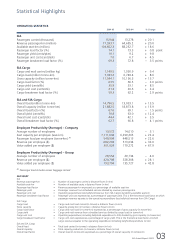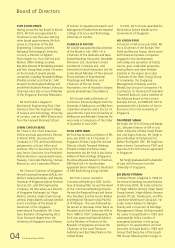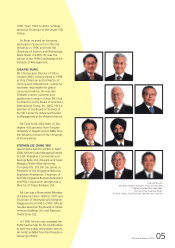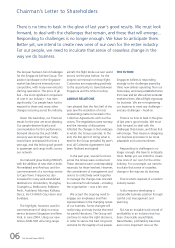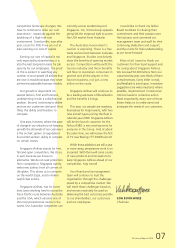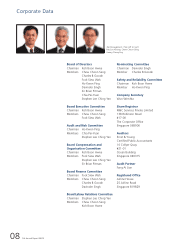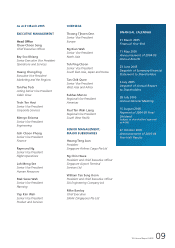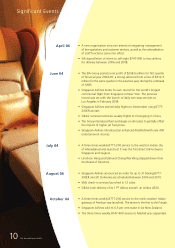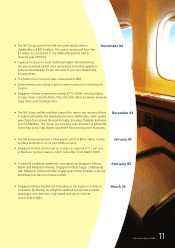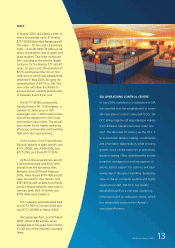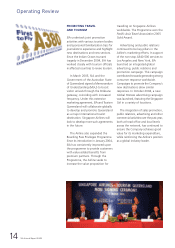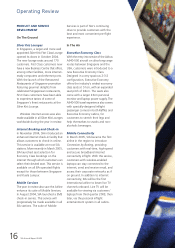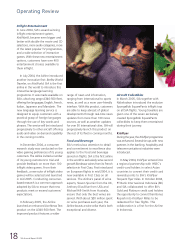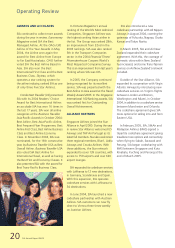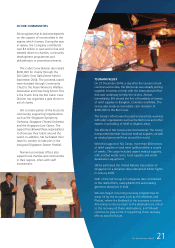Singapore Airlines 2005 Annual Report Download - page 15
Download and view the complete annual report
Please find page 15 of the 2005 Singapore Airlines annual report below. You can navigate through the pages in the report by either clicking on the pages listed below, or by using the keyword search tool below to find specific information within the annual report.
SIA Annual Report 04/05 13
SIA OPERATIONS CONTROL CENTRE
In July 2004, operations co-ordination in SIA
was boosted with the establishment of a new
SIA Operations Control Centre (SIA OCC). SIA
OCC brings together all major decision makers
from different operational areas under one
roof. The rationale for setting up the OCC is
to ensure faster decision making, co-ordination
and information dissemination, while ensuring
greater focus on the customer in operations
decision making. Other added benefits include
proactive management and anticipation of
events, better support for stations and clear
ownership of disruption handling. Backed by
state-of-the-art computer systems and highly
experienced staff, SIA OCC has quickly
established itself as a one-stop operations
information and co-ordination centre, which
has measurably improved the Airline's
operating efficiency.
FLEET
In August 2004, SIA signed a letter of
intent to purchase up to 31 Boeing
B777-300ER (Extended Range) aircraft.
The order – 18 firm and 13 purchase
rights – is worth US$7.35 billion at list
prices, including the cost of spares and
spare engines. This order reinforced
SIA's standing as the world's largest
customer for the Boeing 777 aircraft
series. At year's end, SIA operated 57
B777s and had another 20 on firm
order (one of which was subsequently
delivered in May 2005, bringing the
operating fleet of B777s to 58). The
new order will allow the Airline to
achieve annual capacity growth rates
of between 4 and 6 per cent.
The B777-300ER, powered by
General Electric 90-115B engines, is
capable of carrying up to 350
passengers over 7,000 nautical miles
and will be deployed on SIA's long
and medium haul routes. The aircraft
was chosen for its higher operating
efficiency, commonality with existing
fleet and cabin spaciousness.
In the course of the financial year,
SIA took delivery of eight aircraft: one
B777-200ER, two A340-500s, two
B777-200s and three B777-300s.
As the Airline acquired new aircraft,
it decommissioned nine B747-400
aircraft from the operating fleet.
Between June 2004 and February
2005, three leased B747-400 aircraft
were returned to their lessors. Four
B747-400 aircraft on lease to Air Pacific
and Air Atlanta Icelandic were sold to
German bank DVB. A further two
B747-400s were traded in.
The Company sold and leased back
one B777-300 in October 2004 and
two B777-200ERs in March 2005.
SIA's passenger fleet, as at 31 March
2005, stood at 89 aircraft. At an
average age of five years four months,
it is still one of the industry's youngest
fleets.


